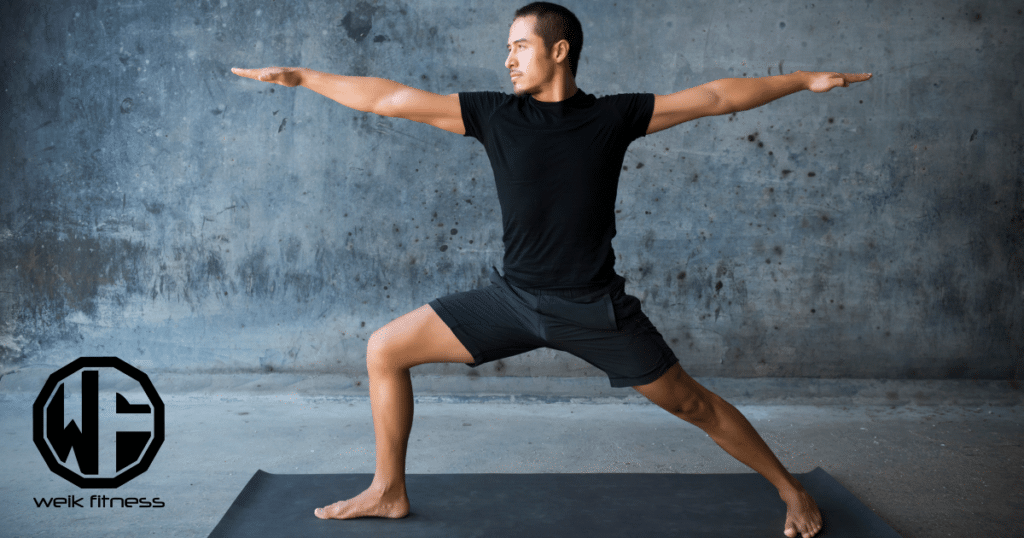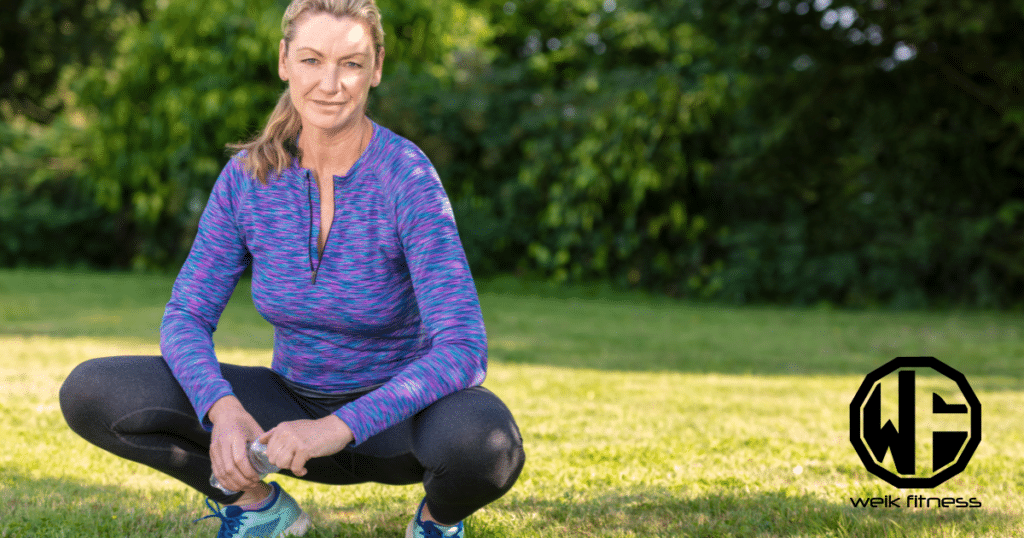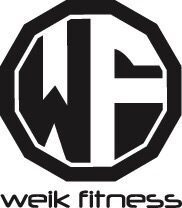What Are Active Rest Days and Active Recovery Workouts?
When was the last time you took active rest days from your training or some sort of active recovery? It’s probably been a while, or perhaps you have never even done such a workout.
Let me ask you another question: Have you ever found yourself trapped in that seemingly never-ending loop of workout sessions, each one leaving you more sore and tired, yet somehow not building more muscle, or aren’t any stronger than you were hoping for? Yeah, it’s a common story.
And believe me when I say that pushing your limits too far can really backfire, leading to burnout and even injuries — a point that plenty of fitness research backs up. That’s why I decided to explore the concept of active rest days and recovery workouts.
What I stumbled upon was pretty eye-opening. Allowing your body some downtime with gentle movements can actually do wonders for boosting performance and easing muscle soreness.
In this article, we will dive deeper into what active rest days are all about, their incredible benefits, and how sprinkling them into your workout regime could be the transformation you’ve been needing to steer clear of hitting that plateau.
So, gear up to revamp your fitness routine — trust me, your body will be sending loads of thank-yous later! Giving your body time from strength training is more than grabbing a foam roll. Let’s dive into things!
Table of contents
Key Takeaways
- Active rest days balance resting and light training, like yoga or walking, which helps muscles heal and boosts blood flow.
- Benefits include better performance due to increased muscle recovery, reduced risk of injuries, less muscle soreness, and mental health improvements.
- Examples of active rest day workouts are yoga for relaxation and rebuilding muscles, light cardio such as swimming or walking for keeping the body engaged without overdoing it, mobility exercises for flexibility and preventing stiffness, and stretching to maintain flexibility and prevent injuries.

What Are Active Rest Days or Rest Day Workouts?
An active rest day is a balance between total rest and training hard. It involves choosing low-impact training or other gentle movements that keep my body active without the strain of a high-intensity workout.
On these days, I focus on recovery activities that boost blood flow to sore muscles and help them heal. These can include things like yoga, walking, or using a foam roller on tight muscle tissue.
I aim for one to three active rest days per week based on my workout intensity and what I feel my body needs. It’s fine to take a rest day to help your body recovery properly. You should listen to your body as it will tell you when it needs a rest.
Personally, I need active rest as it give me something to do every day. If I don’t do any form of exercise, it honestly messes with my head. I need daily movement in my life. Passive recovery is not for me. I need some sort of daily workout in my workout plan. Complete rest is not in the cards for me unless I’m injured or sick.
Related Article: What Is a Deload Week and Why Would You Need One?
On an active recovery day, staying hydrated and eating well are key for me to get ready for more intense exercise sessions later. It’s also crucial that I listen to my body during these times.
If I feel constant soreness or fatigue, it’s a sign that I need this gentler approach rather than pushing through another tough workout. This strategy helps prevent injuries by not overloading my muscles before they’ve had time to repair from previous workouts.
And being that I’m no spring chicken anymore means a minor injury could sideline me for weeks.
Benefits of Active Rest Days and Active Recovery

Active rest days provide essential recovery time for your body, promoting muscle repair and growth. They also reduce the risk of overtraining, helping to prevent burnout and fatigue.
1. Boosts Performance
I have found that active rest days are not just a break from my regular workout routine, but they actually boost my performance. Letting my body recover through low-intensity activities like yoga and light cardio helps increase blood flow to my muscles.
RELATED: Yoga for Athletes — Boost Recovery and Sports Performance
This process is crucial for removing lactate, which builds up during intense workouts. More importantly, improved blood circulation speeds up muscle recovery.
My experience aligns with studies showing that engaging in active recovery can lead to better overall physical performance. Instead of spending a day on the couch, I choose activities that keep me moving gently.
These aren’t strenuous but they’re designed to give my body time to heal while staying prepared for the next hard workout session. The difference in how I perform after incorporating these types of rest days into my schedule is noticeable — I come back stronger and more focused for my next intense training session without feeling worn down or at risk of injury.
2. Aids in Mental Recovery
Active rest days do wonders for my mind. They allow me to take a breather from the intense focus and discipline of regular training sessions. Engaging in activities like meditation or yoga on these days helps clear my head and reduce stress.
It’s amazing how giving my body time to rest translates into mental clarity and a refreshed state of mind.
My active recovery workouts often include light cardio — like a brisk walk or leisurely swim — which keeps blood flowing to muscles without overworking them.

This movement ensures I’m not sitting too long, which can make me feel sluggish or affect my mood negatively.
By listening to my body and incorporating low-impact workout routines, I find myself more mentally prepared for the challenges ahead, be it another day full of tasks or an upcoming high-intensity interval exercise bout that demands both physical and mental stamina.
3. Minimize the Risk of Injury
Regular rest days are crucial for reducing the risk of injury during exercise. They help prevent overuse injuries and provide the body with much-needed recovery time, lowering the chances of tiredness, sluggishness, and performance decline.
Incorporating protein and carbohydrate intake on rest days is essential for muscle repair, further minimizing the risk of injury.
Taking regular recovery days plays a vital role in preventing various types of exercise-related injuries, including those from cardio workouts, running, bodybuilding, or weight training.
It’s also advisable to seek guidance from an exercise professional to ensure proper injury prevention strategies are being implemented.
4. Reduce Soreness
Active rest days and recovery workouts play a crucial role in reducing muscle soreness. These methods aid in decreasing delayed onset muscle soreness (DOMS) and perceived fatigue, which are common after intense exercise.
According to a meta-analysis, active recovery activities such as mobility exercises, massage, compression garments, immersion, contrast water therapy, and cryotherapy have been shown to decrease DOMS and fatigue.
Additionally, studies have highlighted that massage is particularly effective for reducing DOMS and fatigue. Incorporating these recovery techniques into your routine post-workout can significantly alleviate soreness.
Studies also found that certain recovery methods like massage and cold exposure lead to a decrease in inflammatory markers such as creatine kinase, interleukin-6, and C-reactive protein.
Therefore, incorporating these practices after strenuous workouts can help reduce inflammation and promote better muscle recovery.
By embracing active rest days and integrating recovery workouts into your regimen — including mobility exercises or utilizing techniques like massage — you can effectively mitigate the discomfort of muscle soreness following intense physical activity.
Examples of Active Rest Day and Active Recovery Day Workouts

For active rest days, engaging in activities such as yoga, light cardio (like walking or swimming), mobility exercises, and stretching can aid in muscle recovery without exhausting the body.
These activities provide a gentle way to keep the body moving and promote flexibility without exerting excessive effort.
1. Yoga
Yoga is an ideal active recovery workout that supports muscle recovery and rebuilding. It aids in clearing blood lactate from the body, reducing muscle fatigue, and promoting overall relaxation.
This low-intensity activity is recommended for active rest days to help the body recover after intense training sessions. Including yoga in your workout routine can provide numerous benefits, helping you stay active while allowing your muscles to recuperate effectively.
Remember… yoga isn’t just a stretching exercise; it’s a valuable tool for boosting mental well-being and physical recovery after intense workouts. And all you need is a yoga mat.
2. Light Cardio (e.g., walking, jogging, swimming)
Walking, jogging, and swimming are excellent examples of light cardio workouts that can be part of active rest days or recovery routines. These activities help keep the body engaged at a lower intensity while allowing for much-needed physical recovery.
For instance, a leisurely swim or an easy-paced jog can aid in reducing muscle soreness and promoting mental relaxation after intense workout sessions. Engaging in these light cardio exercises aligns with the CDC’s recommendation to attain 150 minutes of exercise each week, contributing to overall fitness and well-being.
Moreover, integrating light cardio into workout schedules doesn’t demand setting new personal records but instead serves as a strategic approach for aiding muscle recovery and maintaining an active lifestyle without overexertion.
Notably, this type of low-intensity activity contributes significantly to overall cardiovascular health while serving as an effective tool for post-workout recuperation.
3. Mobility Exercises
Mobility exercises help maintain flexibility and range of motion. These exercises can include dynamic stretching, bodyweight movements such as lunges and squats, and specific drills to target joint mobility.
When I engage in mobility exercises during active rest days or active recovery workouts, it helps me stay agile and prevents stiffness. It also contributes to injury prevention by keeping my joints supple and ready for the next workout.
If there’s one thing I learned, joint health is something you should do and focus on no matter how young you are.
Additionally, incorporating mobility exercises into my routine promotes better posture and alignment, which is essential for overall physical well-being.
Remember that these kinds of exercises shouldn’t feel strenuous — rather, they should gently ease tension in the body while promoting relaxation.
Yoga can be a great example of how mobility exercises integrate breathing techniques with gentle movement to enhance flexibility and release built-up tension within the muscles.
Subtle movements like leg swings or arm circles are beneficial, too; think of them as taking your joints through their full range of motion without any resistance!
4. Stretching
Stretching is crucial for maintaining flexibility, preventing injury, and improving overall performance. It focuses on increasing the length of a musculotendinous unit and is often included in physical therapy interventions for shoulder, back, and knee pain management.
However, it’s important to note that static stretching as part of a warm-up immediately prior to exercise has been shown to be detrimental to muscle strength and performance. Therefore, incorporating stretching into active rest days can help with recovery by addressing tight areas without compromising strength and performance.
Muscle “tightness” can result from various factors such as postural adaptation or scarring, as well as spasms or contractions. By engaging in stretching activities during active rest days, individuals can address these issues while allowing their bodies time to recover from intense workout days.
In essence, stretching plays a vital role not just in rehabilitation but also in regular exercise routines by promoting muscle recovery and reducing the risk of injury.
Incorporate Active Rest Days and Active Recovery Workouts into Your Plan

Active rest days and active recovery workouts are crucial for allowing the body to recover and rebuild after intense training. These activities help improve performance, prevent injuries, reduce soreness, and contribute to mental well-being.
By incorporating gentle movement and varied activities such as yoga, light cardio, and stretching into our fitness routine, we can achieve a balanced approach to overall health and fitness.
Embracing regular recovery practices not only enhances physical abilities but also supports long-term sustainability in our fitness journey. Therefore, it’s vital to prioritize active rest days or active recovery workouts for optimizing performance and maintaining a healthy exercise regimen.
Looking for some ways to make your active rest days and active recovery workouts even better? Check out the recommended products below:
Active Rest Days and Active Recovery Workouts Resources
- https://pmc.ncbi.nlm.nih.gov/articles/PMC5478529/
- https://pmc.ncbi.nlm.nih.gov/articles/PMC8850927/
- https://pmc.ncbi.nlm.nih.gov/articles/PMC4096096/
- https://pmc.ncbi.nlm.nih.gov/articles/PMC10914654/
- https://www.healthline.com/health/active-recovery
- https://www.healthline.com/health/exercise-fitness/rest-day
- https://www.medicalnewstoday.com/articles/active-recovery
- https://pmc.ncbi.nlm.nih.gov/articles/PMC5932411/
- https://blog.nasm.org/active-recovery
- https://methodgym.com/7-active-recovery-workouts/
- https://pmc.ncbi.nlm.nih.gov/articles/PMC3588659/
- https://pmc.ncbi.nlm.nih.gov/articles/PMC3273886/
- https://pmc.ncbi.nlm.nih.gov/articles/PMC8133317/


*Disclosure: This article may contain affiliate links or ads, which means we earn a small commission at no extra cost to you if you make a purchase through these links. These commissions help support the operation and maintenance of our website, allowing us to continue producing free valuable content. Your support is genuinely appreciated, whether you choose to use our links or not. Thank you for being a part of our community and enjoying our content.
PLEASE CONSIDER SHARING THIS ON YOUR SOCIAL MEDIA TO HELP OTHERS LEARN MORE ABOUT THIS TOPIC.





